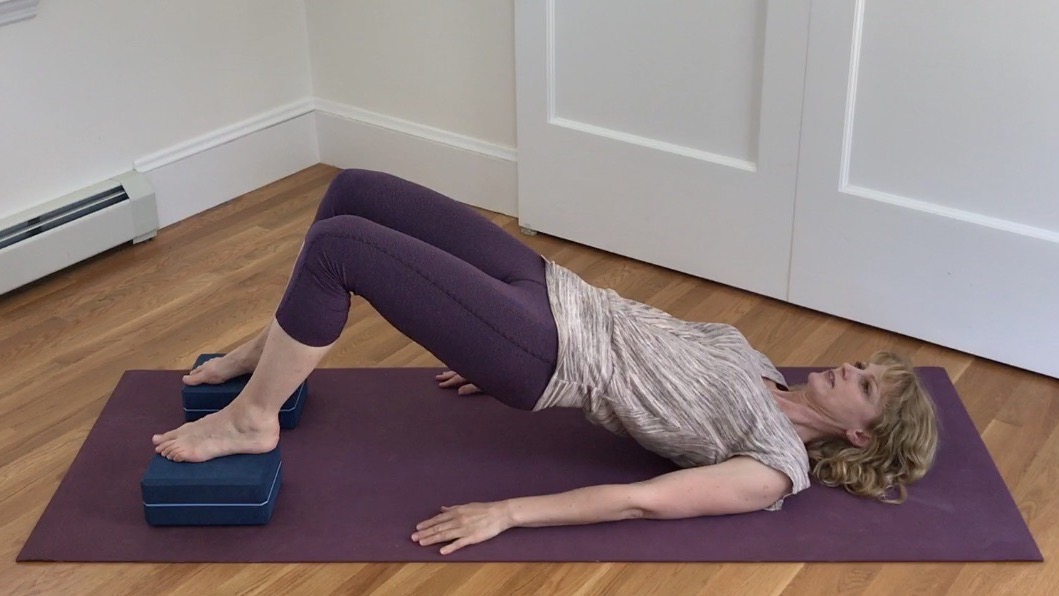The Pilates Bridge: Tutorials, Benefits, and Progressions
Sep 28, 2021
Bridging is a fundamental exercise from the Pilates repertoire. You might come across this exercise in almost every class you take or session you teach.
The Pilates Bridge is mostly a hip extension and knee flexion exercise, which lengthens your quadriceps and strengthens your hamstrings and glutes.
The most common Bridge is the one on the mat because it doesn't require any equipment or props. But there are many other variations of Bridging, for example on the Reformer, Chair, Spine Corrector, and Ladder Barrel.
In this post, I explain how the exercise changes depending on which equipment or prop you use.
Bridging on the Mat
From a supine position (lying on your back) with bent knees, press your feet into the floor and lift your hips. Initially, you can hold the position to build isometric strength. Over time, lift on the exhalation and lower your hips on the inhalation.
In Pilates, we usually prefer dynamic movement over static postures, that's why we usually refer to this exercise as "Bridging" instead of simply the "Bridge" which you might be familiar with from other forms of exercise, such as yoga.
In addition to the lower body challenge, you can add spine articulation to this exercise. Instead of simply pressing your hips up, you can roll up through your spine, one vertebra at a time, starting with your pelvis.
This improves the segmental movement of your spine, freeing up tension between two adjacent vertebrae, resulting in more spine mobility, health, and relief from muscle tension.
Bridging with Blocks
If segmental spine mobility is your main goal with the Bridge, then I would recommend you place your feet up on something higher, for example, a couple of blocks.

Elevating your feet will give you the feeling of a longer line. You'll have more space which will make it easier to focus on each of your vertebrae moving independently from one another. This is due to the amount of flexion that's possible in your spine.
To get the maximum stretch for your spine, you could lift your feet even higher, for examply by placing them against a wall.
Bridging at the Wall
This variation might remind you of the Tower exercise on the Cadillac. For some of my students, Tower is the single best exercise to release tension from their backs.
The higher you position your feet the more range you get into spine flexion, but the need for hip extensor strength decreases. So if your goal with Bridging is hamstring and glute strength, keep your feet lower.
Lie on your back, facing a wall (or locked door). Scoot close to the wall, and place your feet flat against the wall, hip-width apart. You’re at the perfect distance from the wall when your knees and hips are both bent 90 degrees. Start by rolling your pelvis towards your shoulders one vertebra at a time. Roll up until only your shoulder blades are touching the mat. Breathe into your back. Slowly roll back down, articulating your spine one vertebra at a time. Pay special attention to the areas of your spine, where a whole chunk of back comes down at once.
Bridging on the Spine Corrector
In the Pilates studio, or if you have a Spine Corrector at home, you can place your feet on the curved part of the arc. I personally love the feeling of my feet on the slightly curved surface, it's like my feet are hugging the apparatus. It's a treat for my feet! 👣😀
This is also a great Bridge to include in your Spine Corrector or Arc classes.
Bridging on the Reformer
If your goal is to improve your glute and hamstring strength, then Bridging on the Reformer should be your go-to variation. The lighter the spring tension, the more your hamstrings have to work. 🔥
Bridging on the Chair
Similar to the Reformer, the added spring tension on the Chair adds challenge to your hamstrings. If you have access to a split pedal chair, then you can challenge yourself by separating the pedals, which will make you more aware of how strong each leg is and whether you favor one over the other.
There is even a Bridge on the Ladder Barrel, but it is very different from all other Pilates bridges because it moves the spine into extension instead of flexion. That's why I often call it Semi-Circle.
On the Cadillac, the bridge position shows up in the exercise Pelvic Press, but only for a fleeting moment in the flow of the full exercise.
I'd love to hear from you: Which is your favorite variation of Bridging and why do you like it? Shoot me an email with your thoughts.










